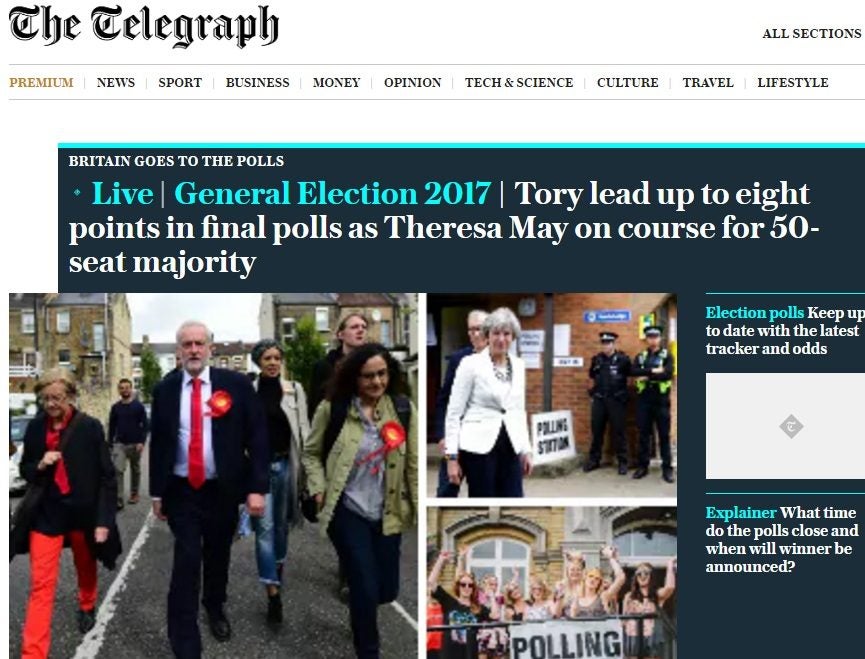
The Daily Telegraph says it has doubled the number of daily subscribers to its premium content, which sits behind a paywall, since the snap general election announcement in April.
Telegraph chief customer officer Robert Bridge told Press Gazette: “What we are seeing is these big news cycles – especially around our politics coverage – drives significant uptake in our subscriptions.
“I think this is something that the US publishers saw with Donald Trump as well. It’s good news that people are prepared to pay for quality journalism.”
Bridge said the rise was partly the result of the “election bug”.
But he said it could also have been helped by a recent advertising campaign around London and the south east and “some quite clever digital marketing” that targets people who have engaged with Telegraph content and encourages them to sign up as paying subscribers.
About 80 per cent of the Telegraph’s online content now sits behind a paywall, with the remaining 20 per cent remaining free to access.
Readers can sign up as paying subscribers for £2 a week (after a 30-day free trial) to see it all or register for free to access one piece of premium content per week (as well as free online content).
Said Bridge: “The reason we built the content model – open and premium – is we believe we need to have scale and reach for advertisers and our e-commerce business, but we also need to have a healthy subscriber base.
“We are very pleased because since the launch of premium the numbers are significantly higher than they were with the previous model and it’s very encouraging.”
The Telegraph website has 4.2m daily unique browsers, according to ABC figures for April, up 4 per cent year on year.
Bridge claims overall there has been “significant growth” in subscriptions since the launch of the premium content model, with a revamp of its mobile and tablet app at about the same time helping to drive sign ups.
“You don’t have to sign up [to access app content] but in the welcome journey it’s something we encourage and a very high percentage of people do do that,” he said.
Bridge pointed to the likes of Netflix and Amazon Prime as ushering in a new culture where people “seem to be more comfortable with paying for digital media content”.
He added: “We are certainly seeing that this model, where we have a hard paywall in front of certain content, is driving results for us.
“We are not going down the route of the Times and Economist. We want to have a healthy, robust advertising and e-commerce business and subscription base, and we believe this layered model is the way to achieve that.
“We believe in a diversified business model and to future proof our business and to ensure we deliver quality journalism for another 163 years we need to have multiple revenue streams.”
Bridge would not give figures on subscriber numbers.
Email pged@pressgazette.co.uk to point out mistakes, provide story tips or send in a letter for publication on our "Letters Page" blog
